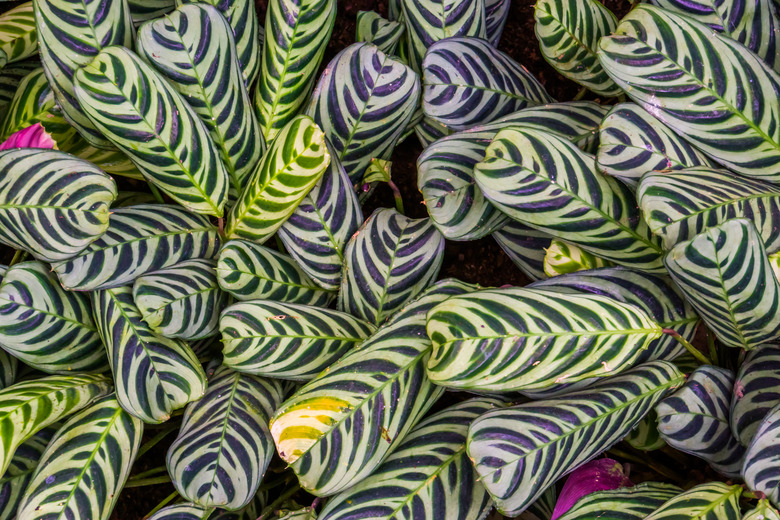Problems With A Prayer Plant
The leaves of the Maranta leuconeura fold closed at night like praying hands, thus its common names of "prayer plant," "praying plant," and "praying hands plant." It's hardy only in the warm climate of USDA zone 11, but it's an easy-care houseplant. The North Carolina State Extension lists "cathedral windows" as one of this plant's common names because of its striking foliage. Depending on the specific cultivar, the plant can reach up to 2 feet in height, producing lavender or white flowers set against the variegated foliage. Keep the plant healthy and problem-free for years of enjoyment.
Prayer Plant Leaves Turning Yellow
Prayer plant leaves turning yellow may point to a lighting issue. The prayer plant thrives in light shade. Excessive direct sunlight can make its variegated colors fade or burn the plant, causing yellowing or browning on the edges of its leaves. Move the plant out of direct sunlight if you notice such symptoms. Sunlight is especially a problem in south-facing windows and all windows in the summer.
Prayer Plant Chlorosis
Iron deficiency, technically known as chlorosis, can affect prayer plants grown on potting soil with the improper pH levels, according to the University of Florida. Soils with a pH higher than 6.0 may decrease the amount of iron that's available for the prayer plant's roots to absorb, causing stunted growth, wilting and poor colors.
Garden stores and nurseries often sell soil testing kits, and an application of sulfur or aluminum sulfate can lower the pH if needed. The specific amounts of pH-adjusting amendments varies according to the potting soil type and volume, and the amount that the pH needs adjusting. Contact the nearest cooperative extension office for specific guidance.
Praying Plant Root Rot
Prayer plants need moist soil to grow, but overwatering can lead to root rot, one of the more common problems for this species. After applying water, allow the top 2 to 3 inches of potting soil to dry out before watering it again.
Soil for Praying Hands Plant
The prayer plant's colors may fade and its growth may slow once it depletes the nutrients in its potting soil. Remedy this with any standard fertilizer labeled for use on houseplants, with applications every few weeks during the months of May through September. During this time, the plant grows most vigorously and has a higher nutrient uptake.
Prayer Plant Lacks Humidity
Prayer plants grown in dry air, common indoors especially if the home is heated or cooled, may exhibit wilting or shriveling of the foliage. The plant does best in high humidity. Set a container of water next to the prayer plant's pot to raise the humidity in the immediate vicinity.
Prayer Plant Leaf Spot
The leaf spot disease, caused by the Drechslera setariae fungal pathogen, appears on prayer plants whose foliage has remained wet for extended periods of time. Symptoms include tiny dark spots on the leaves that, if left untreated, lead to foliage loss. Water the plant at its base to avoid getting the foliage wet. Severe cases of the disease may be treated with a houseplant fungicide spray, such as a fixed copper spray.
